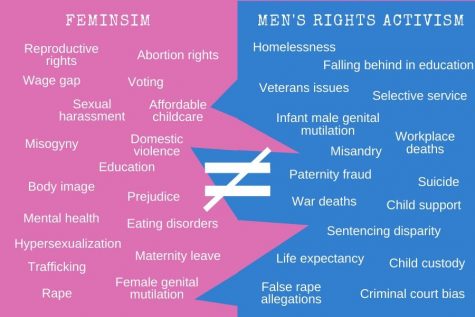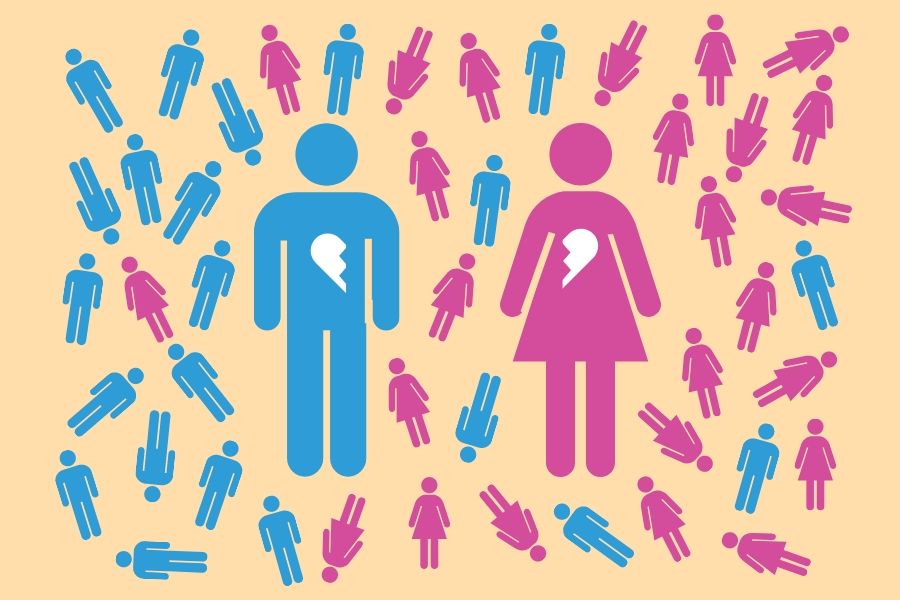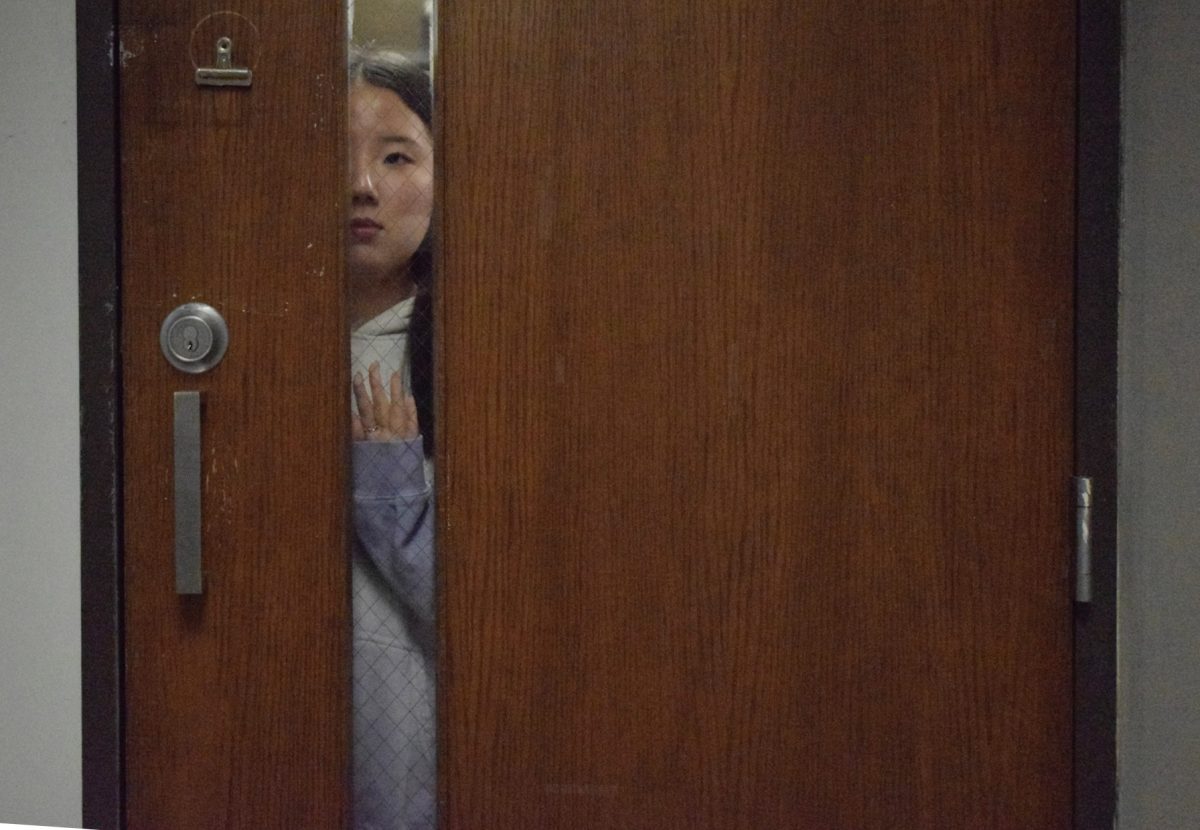People today are more eager than ever to join in discussions about gender equality in terms of feminism. When you bring up, though, that men also face issues specific to their gender, and that these issues also need addressing, more often than not you will be met with a slight (or heavy) grimace and a healthy dose of scorn. We need to understand that both the men’s rights movement and feminism advocate for valid issues and should join together to create an encompassing gender equality movement.
Men’s Rights Activism (MRA) is the lesser known of the two mentioned gender equality movements and aims to address issues that may negatively impact and discriminate against men.
The cornerstone text of MRA is Warren Farrell’s “The Myth of Male Power,” in which he clearly states that he “will be saddened if this book is misused to attack the legitimate issues of the women’s movement.” Farrell’s goal in writing his text was to bring attention to the issues men face by living in the same society feminists dub as “patriarchal.”
The book addresses the negative impacts of the gender roles men are expected to fill, such as how only men are automatically registered for Selective Service because their “duty” is to protect and their lives are seen as expendable, or how men aren’t trusted to be a primary caregiver in the same capacity as a woman is in family court cases and custody battles.
MRAs believe that the same societal gender norms that oppress women also oppress men, even though it might be in different ways. Men are expected to make money and support and protect their families according to their traditional gender roles. This still has influence today, like in family court cases, where men are more likely to end up paying child support and women are more likely to end up with discretion over the terms of visitation or joint custody. Unless legal action is undertaken by the father, the mother will usually automatically receive sole custody, which means the father has to fight for rights to see the child. As a result of this, only one out of six custodial parents are fathers, and over 25% of fathers with children younger than 18 live apart from them.
Journalist Cassie Jaye directed “The Red Pill,” a documentary highlighting MRA and the deep-rooted issues men face and bringing discussion about them to the international scale. Originally a fierce feminist, Jaye mentions in her TEDx Talk that this no longer holds true. It wasn’t until she went back and transcribed the hours upon hours of interview film that she realized MRA wasn’t borne out of contempt for feminism.
Many feminists staged protests outside theaters where “The Red Pill” was screened. They held signs reading “Men’s rights activism: mostly the right to be sexist against women” and “Here to bathe in the [men’s rights activists’] MRAs’ tears.”
For every feminist protester chanting outside theaters, there were probably also MRAs. These MRAs might have held signs like “Feminism is cancer” and “Don’t be that girl.” This darker, more spiteful side of MRA, cultivated mostly under the anonymity of the internet on websites like reddit and 4Chan, ridicules feminism and derides women’s rights issues.
Feminist protests stem from the belief that men’s issues occur as a result of discrimination against women and/or feminine traits. They believe that this discrimination is a result of a long history of patrichical society, and that because feminism addresses this discrimination and patriarchy, it absolves the need for a separate men’s rights movement.
While feminism addresses sound and important issues, it does not advocate for the reform of policies which negatively impact men but positively or neutrally impact women. For example, most feminists do not want conscription to extend to women, who do make up half the population. They cite pacifism and instead tend to support the removal of the draft altogether, but this is a larger issue with more complications. The fight to remove the draft altogether would take ages, and a world without conflict is highly unlikely in the near future; therefore, this solution is not practical in the short term, and men are still being slighted.

This infographic shows the different issues each movement advocates for. While, for example, suicide is an issue that affects both genders, suicide rates among men are higher than suicide rates among women, so MRA focuses on it. Likewise, although eating disorders affect both men and women, they affect a higher percentage of women than men, so feminism focuses on it. Given that both genders are affected by a lot of these issues, however, we should just create an encompassing gender equality movement that addresses them altogether. This way, actions can be taken to address these issues from both genders’ perspectives.
The rationality of MRA ends when it’s activists begin claiming that men are more oppressed. Likewise, the rationality of feminism ends when its activists begin claiming that women are more oppressed, and that action should be taken on issues that adversely affect women first.
Generalizing that all MRAs are woman-haters is bad, just as it is bad to surmise that all feminists are man-haters. Both include two classes of believers: those who truly believe in gender equality for all and those who only believe in putting the victimization of one of the genders up on a pedestal.
Change can only be brought about when both movements work together. Both movements are claiming to want to dismantle the patriarchy. Gender equality isn’t a competition about which group of people faces the most adversity or has the most issues. There are people who don’t see themselves fit neatly into either gender, and they have issues to face as well. As of now, neither movement addresses all gender equality issues. The fight for gender equality will be the most efficient when we all work together to address all of the gender-based issues we face as a society.




![Senior Dhiya Prasanna examines a bottle of Tylenol. Prasanna has observed data in science labs and in real life. “[I] advise the public not to just look or search for information that supports your argument, but search for information that doesn't support it,” Prasanna said.](https://pwestpathfinder.com/wp-content/uploads/2025/10/DSC_0073-2-1200x800.jpg)
![Junior Fiona Dye lifts weights in Strength and Conditioning. Now that the Trump administration has instituted policies such as AI deregulation, tariffs and university funding freezes, women may have to work twice as hard to get half as far. "[Trump] wants America to be more divided; he wants to inspire hatred in people,” feminist club member and junior Clara Lazarini said.](https://pwestpathfinder.com/wp-content/uploads/2025/05/Flag.png)
![As the Trump administration cracks down on immigration, it scapegoats many immigrants for the United States’ plights, precipitating a possible genocide. Sophomore Annabella Whiteley moved from the United Kingdom when she was eight. “It’s pretty scary because I’m on a visa. When my visa expires next year, I’m not sure what’s going to happen, especially with [immigration] policies up in the air, so it is a concern for my family,” Whiteley said.](https://pwestpathfinder.com/wp-content/uploads/2025/05/DSC_0077-7copy.jpg)
![Shifting global trade, President Donald Trump’s tariffs are raising concerns about economic stability for the U.S. and other countries alike. “[The tariffs are] going to pose a distinct challenge to the U.S. economy and a challenge to the global economy on the whole because it's going to greatly upset who trades with who and where resources and products are going to come from,” social studies teacher Melvin Trotier said.](https://pwestpathfinder.com/wp-content/uploads/2025/05/MDB_3456-1200x800.jpg)



![Some of the most deadly instances of gun violence have occurred in schools, communities and other ‘safe spaces’ for students. These uncontrolled settings give way to the need for gun regulation, including background and mental health checks. “Gun control comes about with more laws, but there are a lot of guns out there that people could obtain illegally. What is a solution that would get the illegal guns off the street? We have yet to find [one],” social studies teacher Nancy Sachtlaben said.](https://pwestpathfinder.com/wp-content/uploads/2025/01/DSC_5122-1200x800.jpg)



random guy • May 6, 2025 at 2:38 pm
thank you ms. ambal this is my favorite article ever and you are an amazing writer i hope you have the best life and i 100 percent agree with this article have a good day